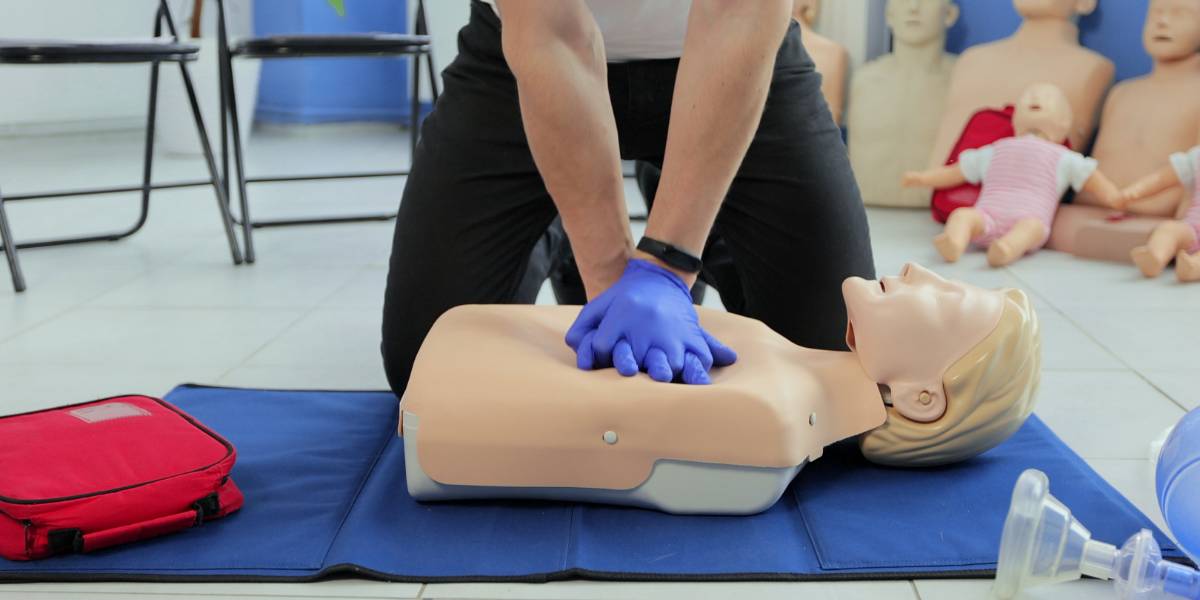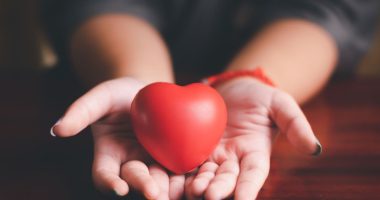CPR, or cardiopulmonary resuscitation, is a life-saving method performed when someone’s heart stops beating or their breathing becomes irregular.
A cardiac arrest is a life-threatening emergency which differs from a heart attack.
A cardiac arrest occurs when the heart experiences an abrupt stop to blood pumping throughout your body due to an electrical issue.
When the heart stops pumping blood, the brain does not receive any oxygen and causes the sufferer to become unconscious and stop breathing.
A 2023 survey showed that almost half of British adults don’t know how to perform CPR.
Learning CPR is very important as without CPR, a person in this position can die in minutes.
When do I need to perform CPR?
CPR should be performed only if someone is:
- Unconscious and not breathing
- Unconscious and not breathing correctly
What should I do if someone if unconscious but breathing properly?
Call 999 and place the person in the recovery position if they are unconscious but breathing properly.
What is the recovery position?
The recovery position is a first-aid method used to keep an open airway in a person who is asleep but breathing properly.
The recovery position entails carefully positioning the individual on their side with their head slightly inclined backwards and their upper arm supporting their head to keep the individual from choking on their own saliva or vomit.
How do I perform CPR?
The following are the five steps of doing CPR on an adult person who is not breathing or breathing incorrectly:
Step 1. Shake and shout
- Check for response by shaking and shouting
- If there is no response, call 999 and ask for an ambulance.
Step 2. Call 999
- Call, or ask someone else, to call 999 for an ambulance
- Ask for a public access defibrillator (PAD).
Step 3. Give chest compressions
- Kneel down beside the person
- Place the palm of one hand on the centre of the person’s chest and your other hand on top. Lock your fingers together.
- Keeping your arms straight, use the palm/heel of your hand to push the breastbone down, pressing down 5-6 cm at a rate of 100-120 times per minute.
- According to the British Heart Foundation, you should push to the beat of the Bee Gees’ song Stayin’ Alive: that’s around 2 compressions per second.
- Continue giving chest compressions until help arrives or the person starts to regain consciousness.
Step 4. Persist
- Keep going until the emergency services arrive, or if the person shows signs of consciousness such as coughing, speaking or breathing correctly. If someone else is available, switch turns giving CPR to avoid exhaustion.
Step 5. Use a defibrillator
- If a defibrillator is available, use it by following its instructions, but do not touch the person while they are being shocked.
CPR is different for a baby.
Is a heart attack the same as cardiac arrest?
A heart attack is not the same as a cardiac arrest.
A heart attack occurs when an artery that supplies blood to the heart muscle becomes clogged. A clogged artery deprives a portion of the heart muscle of oxygen which results in chest pain or discomfort.
A person who is having a heart attack is normally conscious and breathing.
You should call the emergency services in either case as both are medical emergencies.
Conclusion
CPR is a life-saving method that can be done when a person’s heart has stopped beating or they are not breathing regularly.
Knowing CPR can give you the confidence and ability to respond quickly and successfully in an emergency, enhancing a person in distress’s chances of survival.






